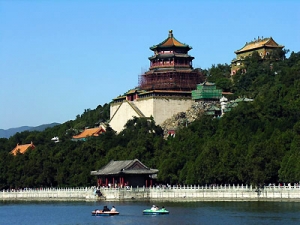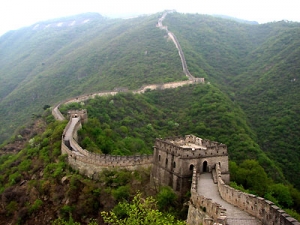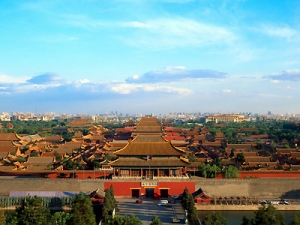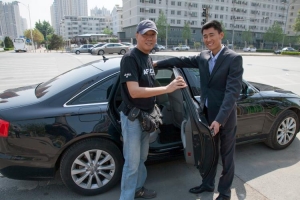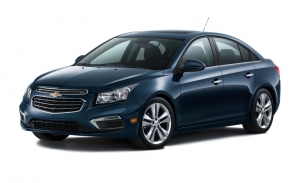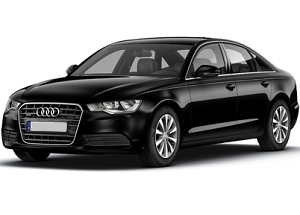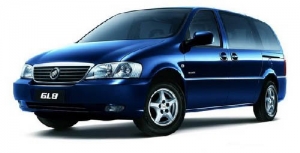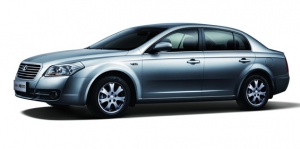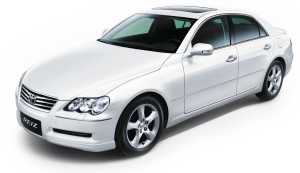News
Attraction Type:
Summer Palace Travel Guide
Location:No. 19, Xinjian Gongmeng Road, Haidian District, Beijing (15 km from the urban district of Beijing)
Highlights
1961 - The first batch of China’s national key cultural relics protection units;
1998 - Be included in the world heritage list;
2007 - Formally approved by China’s National Tourism Administration as National 5A Tourist Attraction;
2009 - Be selected as China’s existing largest royal garden by China Association Of World Records
Time for a Visit:about 1.5 hour
Opening Hours
Busy Season (April to October)
Gate: 6:30—18:00
Garden within garden: 8:30—17:00
Jingyuan Garden: 20:00
Off season(November to next March)
Gate: 7:00—17:00
Garden within garden: 9:00—16:00
Jingyuan Garden: 19:00
Subway
Subway Line 4: get off at Beigongmen Station (North Palace Gate).
The Summer Palace is China existing largest and best preserved imperial garden, also is one of the four famous gardens in China (the other three are Chengde Mountain Resort, Suzhou Humble Administrator's Garden, Suzhou Lingering Garden). It is a large natural landscape garden which used Kunming Lake and Longevity Hill as based address, modeled on the Hangzhou West Lake scenery, drew some design techniques and the mood of the gardens on the yangtze delta. It is also the best preserved royal palace, known as the Royal Garden Museum.
History of Summer Palace
Summer Palace, formerly known as Qing Yi Garden, first built in the Qing Dynasty Qianlong Emperor 15 year (AD 1750), which was completed lasting for 15 years. During the Qing Dynasty, the Summer Palace was the last built palace in the Beijing's famous "three mountains and five gardens" (Xiangshan Jing Yi Garden , Yuquanshan Jing Ming Garden, Wanshoushan Qing Yi Garden, Summer Palace, Changchun Garden). In AD 1860, the Summer Palace was severely damaged in the Second Opium War by Anglo-French Allied Force. The buildings were burned and the treasures and Buddha were looted.
In Qing Dynasty Guangxu Emperor 12 Year (AD 1886), the Summer Palace was first rebuilt. In AD 1888, Empress Dowager Cixi appropriated the navy fund to repair this palace and renamed it "Yi He Yuan". In AD 1895, the project of the reconstruction of the Summer Palace was finished.
Summer Palace became the most important political and diplomatic activity center outside the Forbidden City for the supreme ruler in late Qing Dynasty. It is an important witness of the modern history of China and it is also the locality of many major historical events.
In 1898, Emperor Guangxu met Reform thinker - Kang Youwei in the Renshou Hall in Summer Palace to inquire political reform; after the failure of Hundred Days' Reform, Emperor Guangxu was put under house arrest in Yu Lan Tang in the garden for a long time, since, the Summer Palace was said to be the most luxurious prison.
In AD 1900, the Summer Palace again suffered the loot by the Eight-Power Allied Forces, the following year, the Empress Dowager Cixi returned to Beijing from Xi'an, once again utilized the large sums of money to fix this palace. In 1924, the Summer Palace was turned into a park which is opening to the outside world.
Layout of Summer Palace
Summer Palace is a large-scale park, covering an area of 2.97 square kilometers (293 hectares), of which the water surface accounted for three-quarters (about 220 hectares). The park mainly consists of Longevity Hill and Kunming Lake.
Summer Palace has the Tower of Buddhist Incense as its center. It has more than 100 sightseeing buildings, more than 20 large and small courtyards, 3555 ancient buildings, which totally covers an area of over 70,000 m². The park has a total of more than 3000 pavilions, table, floor, corridor, shed, etc. more than 1600 old tree and famous wood species. Among which, the Tower of Buddhist Incense, the Long Corridor, Marble Boat, Suzhou Street, Seventeen-Arch Bridge, Garden of Harmonious Interest, etc. have become well-known typical construction.
The Summer Palace is full of magnificent momentum of Chinese royal gardens, and also full of interest of nature. It collected the great achievement of the traditional gardening art, used the Longevity Hill and Kunming Lake as the basic framework, borrowed landscape environment around the scenery. The artificial landscape like the pavilions, long corridor, halls, temples, bridges along with the natural mountain and wide lake are harmonious with each other and fused together artistically. The entire garden reflects clever artistic conception, is the set of the the a masterpiece of the Chinese garden architectural art. It has a significant and impressive status in the Chinese and foreign history of garden art.
The main attractions in the park is divided into three regions: the solemn and majestic Hall of Benevolence and Longevity is regarded as the representative of political activity area which was the main place for the internal affairs, diplomatic and political activities by Empress Dowager Cixi and Emperor Guangxu in late Qing Dynasty; the courtyards like the Le Shou Tang, Yu Lan Tang, Yi Yun Museum are the representative of the living area which is the place of residence for Empress Dowager Cixi, Emperor Guangxu and his imperial concubines. The Longevity Hill and Kunming Lake are regarded as the representative of the scenic area.
►Recommended Beijing Tour: 5 Days Beijing Highlight Tour
(Attractions: Tian'anmen Square, the Forbidden City, Temple of Heaven, Badaling Great Wall, Summer Palace, Yonghe Palace, Beijing Hutong)
Attraction Type:
Mutianyu Great Wall is located in Huairou District, Beijing, 73 kilometers away from Beijing downtown area. It is one of the famous sections of China Great Wall. Mutianyu Great Wall was first built in the mid-6th century during the Northern Qi, making it older than the Badaling section. In 1569, the Mutianyu Great Wall was rebuilt and till today most parts of it are well preserved. The Mutianyu Great Wall has the largest construction scale and best quality among all sections of Great Wall.
It is connected with Jiankou in the west and Lianhuachi and Jinshanling in the east. In 1569, the Mutianyu Great Wall was rebuilt, mainly with granite and is one of the best-preserved sections with the largest construction scale and best quality among all sections of Great Wall, being 7-8 meters high and 4-5 meters wide with 22 watchtowers on this 2,250-meter-long section. It served as the northern barrier defending the capital and the imperial tombs.
There are 22 watch towers distributed at close intervals along the wall. They are located not only in the main wall but also at the distinctive 'branch cities'. Branch cities are built on the hill ridge against the inner or outer side of the wall. They measure from several yards to dozens of yards across. On the northwest over 3,281-feet hills, lies a section of the wall called 'Ox Horn Edge'. On the steep and lofty peaks, there are two walls named 'Flying Eagle Flies Facing Upward' and 'Arrow Lock'. What is more rarely seen on the southeast side is a general gateway platform guarded by three watch towers together. In locations of strategic importance, batteries are set up to reinforce the defense capabilities. Mutianyu Great Wall really deserves to be the archetype of the ten thousand li Great Wall.
Features
Built mainly with granite, the wall is 7-8 meters high and the top is 4-5 meters wide. Compared with other sections of Great Wall, Mutianyu Great Wall possesses unique characteristics in its construction
1. Watchtowers are densely placed along this section of the Great Wall - 22 watchtowers on this 2,250-meter-long stretch.
2. Both the outer and inner parapets are crenelated with merlons, so that shots could be fired at the enemy on both sides - a feature very rare on other parts of the Great Wall.
3. The Mutianyu Pass consists of 3 watchtowers, one big in the center and two smaller on both sides. Standing on the same terrace, the three watchtowers are connected to each other inside and compose a rarely seen structure among all sections of Great Wall.
4. Among Great Wall section, it has the lowest elevation of the Great Wall, which make it rich in three-dimensional sense. Mutianyu has the lowest altitude of only 486 meters
5. Mutianyu has a large area of vegetation. The vegetation coverage rate of it reaches 96% today. Such a large area of vegetation is not comparable to any section of the Great Wall sections. When the spring comes, the great wall is surrounded by green plants and colorful flowers, which looks amazing. Or if you want to see the large area of red leaves, you can go there in autumn.
Travel Guide
Opening Hours:
It opens to the public all year around.
April to October: 7:00 - 18:00
November to March: 7:30 - 17:30
Best time to visit
The best time to visit China Great Wall is in Spring and Autumn, especially in April, May, September or October, when has good weather and moderate climate.
Now, Mutianyu Great Wall is a world-famous great wall section in Beijing. To offer more convenient to the visitors, there are three ways of ascent and four ways of descent to choose from. Except for the 4000 steps in the great wall, you can also take a two-rider chairlift or four-rider gondola up from the foothills to the top of the wall. They run long the ridges above. As for descent, you may use the above ways to do it, but you may also single-rider personal wheeled toboggan to descent, which allows single riders to descend from the wall to the valley on a winding metal track.
►Recommended Beijing Tour: 4 Days Best of Beijing Tour
(Attractions: Tian'anmen Square, the Forbidden City, Temple of Heaven, Mutianyu Great Wall, Changling Tomb)
Attraction Type:
- World Heritage Sites in China
- Museums, Memorials & Research Centers in China
- Ancient Architectures in China
Location: Chang'an Street in Dongcheng District, Beijing (the center of Beijing city)
Highlights:
1961 - the first batch of China's national key cultural relics protection units;
1987 - World Heritage Site;
2013 - the world's existing largest and most complete ancient wooden structure buildings
Time for a Visit: 2.5 - 3 hours
Opening Hours:
Each April to October: 8:30-16:00
Each November to March: 8:30-15:30*
Close in each Monday afternoon (Except China national holiday, July to August)
Subway: Subway Line 1 - get off at Tiananmen East Station or Tiananmen West Station.
The Imperial Palace was formerly known as the Forbidden City, which covers an area of over 720,000 m², has more than 9,000 buildings and construction area of 150,000 square meters. Forbidden City was the imperial palace of the Ming and Qing dynasties, is the existing China's largest and most complete ancient buildings. It was first built in 1406 and finished in 1420. In its 500 years of history, there were 24 emperors living here. Experiencing several times renovation and expansion during the Ming and Qing dynasties, the Forbidden City is still remaining its original layout.
Forbidden City is known as the world's five major palaces (Forbidden City in Beijing, the Palace of Versailles in France, Buckingham Palace in UK, the White House in America, the Kremlin Palace in Russia). In 1961, the State Council announced the Forbidden City as the first batch of national key cultural relics protection units. In 1987, the Forbidden City was listed as World Cultural Heritage by the UNESCO. Juries evaluated: "The Forbidden City is the supreme power center in China over five centuries, with its landscape architecture, and huge buildings which accommodate 9,000 rooms of furniture and crafts, it has become a priceless historical witness of the Chinese civilization of Ming and Qing era.
The Forbidden City is also a treasure trove of movable cultural relics; it is the seat of the National Palace Museum. It has over 1.8 million movable cultural relics, including more than 1.68 million pieces of precious relics. In 2012, the highest single-day passenger flow volume of Forbidden City exceeded 180,000 people, and annual passenger flow volume exceed 15 million people. It can be regarded as the busiest museum in the world.
Layout of the Forbidden City
Forbidden City is surrounded by wall which is 10-meter high, 960-meter long from north to south and 753-meter wide from east to west, covering an area of 720,000 square meters which is the largest in the world. The entire construction of the Forbidden City is enclosed by two solid line of defense; the outside of this palace is a moat which is 52 meters in width, 6 meters in depth, and 3800 meters in length. The palace has 4 gates including Meridian Gate (Wumen) in the south, the Gate of Devine Might (Shenwumen
in the north, Donghua Gate (Donghuamen) in the east and Xihua Gate (Xihuamen) in the west. The four corners of the wall stands with 4 turrets which has 3-layer roof and 72 ridges, which are exquisitely carved, uniquely shaped and masterpieces of ancient Chinese architecture.
Based on its layout and function, Forbidden City is divided into two parts - the "Outer Palace" and "Inner Court". These two parts are bounded by Gate of Heavenly Purity (Qianqingmen): south is outer palace and north is inner court. The building atmosphere is very different between these two parts.
The "Outer Palace" regards Taihe Palace, Zhonghe Palace and Baohe Palace as its center, and is located in the central axis of the entire palace. Taihe Palace is generally called emperor's audience hall or "Qian Chao", where emperors held court. It is the place for emperors to exercise the powers and held festivals.
The inner court has the 3 imperial harems as its center, including the Palace of Heavenly Purity (Qianqing Palace), the Hall of Union and the Palace of Earthly Tranquility (Kunning Palace). This area also consists of Hall of Mental Cultivation, Six Eastern Palaces, Six Western Palaces, Imperial Garden, etc. These places are the places for residence and entertainment. The eastern part of the inner court is the Palace of Peace and Longevity (Ningshou Palace) which was built after the abdication of Qianlong Emperor. The western part of the inner court has Hall of Benevolent Peace (Cining Palace), Shou'an Palace, etc.
►Recommended Tour to the Forbidden City: 4 Days Best of Beijing Tour
(Attractions: Tian'anmen Square, the Forbidden City, Temple of Heaven, Mutianyu Great Wall, Changling Tomb)
In the latest edition of the blame game, the Beijing Municipal Government is pointing at the finger at car booking services Uber and Didi Zhuanche for Beijing's congestion.
Of course, this is nonsensical. Beijing only allows 20,000 new cars per month to hit the road, and since neither Uber nor Didi Zhuanche own the cars in which their customer ride, they are not adding new cars to the road, although it could be argued that these cars spend more time on the road than personal use of private cars.
What's interesting is that New York City's moronic mayor Bill Di Blasio just tried the same thing, but to no avail. Di Blasio tried to cap the growth of Uber cars in New York, and failed. Passengers are funny that way, how they want clean cars at the time they want them where they want them, instead of unhailable taxis with rude drivers that stink.
Instead of cracking down on these car services, maybe the Beijing municipal government should try to deal with local taxi drivers, which are an embarrassment to the city and have been for years. Did you know that every Beijing taxi once (and maybe still does) had the capacity to accept payment via the city's public transportation card? Taxi drivers just started telling everyone the machine was broken or that they couldn't accept it.
Uber may not be perfect (when was the last time your Uber driver wasn't 100 percent reliant on GPS to find anywhere) but the car shows up, the drivers are nice, and there's no need to have change. Isn't that what a taxi is supposed to do?
Geez, Uber even served ice cream on Friday. Ever get ice cream from your local taxi driver?
Chevrolet Cruze is general motors to create the design and performance of the compact type benchmark models as the goal to integrate global resources to develop a new generation of works. The car or will be made in Shanghai next year to achieve domestic, in order to compete in the fierce competition in the compact models for the market. Has been concerned about the new Chevrolet compact models Cruze (Cruz) finally in the Paris auto show world debut, unveiled its mystery. Ke Luzi to the avant-garde design style has attracted people's attention, its precision manufacturing process make it is expected to become the new benchmark of compact modelse
Chevrolet Cruze driving performance is good, the performance of the equipment is also very strong. Chassis tuning is very European, the shape is also very international. This car is a mainstream car, but also a very cool car.
Ford S-MAX is Ford's first the Ford of Europe dynamic design (kinetic design) models, replacing the earlier new winger design, full of movement and fashion style design reflects the movement of energy.
Ford S-MAX
Ford S-MAX
The front end of the S-MAX is characterized by a sharp wedge angle, which adds a decisive to the appearance of the dynamic light. The fog is embedded, high arrangement in the front bumper, gives the car a dynamic beauty. License plate under the large trapezoidal grille and grille complementary -- this is Ford's characteristics, but also to the front appearance added a domineering. The lower grille is similar to the "shark gill" design, forming its own unique characteristics. From the Ford S-MAX motion type profile, which is not difficult to see Ford kinetic design intent. Streamline the roof line with arched into the hood, highlighting the wheel arch with post along the wind outlet and its unique curved and window glass rear connected. All of this is not all the show that Ford S-MAX is a charming, dynamic burst of car.
The Audi A6L offers a level of refinement that few luxury large cars can match, with engaging performance, attractive styling and an opulent, tech-filled interior. The cabin is spacious and comfortable being stylish built with premium materials. The Audi A6L is a popular car with Chinese businessmen and senior government officials.
The Buick GL8 is a minivan produced and sold in China under the Buick brand name by shanghai GM (SGM), the joint-venture of saic motor with the US-American company General motors The car is manufactured byshanghai GM Norsom motors which is a manufacturing three-side joint venture of SHANGHAI GM holding 50% and overseeing management, SAIC MOTOR and GM CHINAboth holding 25% of its capital.
A revamped edition was released in late 2010/early 2011, featuring 2.4L and V6 3.0L engines. It is based on an old minivan platform from the U.S., but it would likely require costly upgrade to meet current U.S. safety and requirements. Sales amounted to 52,127 units in 2010, and it was relatively stable over past few years. The previous generation is still available as GL8 First Land
The regular wheelbase GL8 is known as the GL8 2.5 while the extended wheelbase variant is called the GL8 First Land. There are four trim levels available, called the LT, CT1, CT2, and GT (which is only available on the Firstland). In October 2001, the first bunch of Buick GL10s (10 passenger versions of the 1st-generation GL8) were exported to the Philippines where it was rebadged as the Chevrolet Venture.The GL8 underwent a facelift in 2005, receiving a redesigned front end and new clear taillights. While the first generation has been superseded by the new one, as introduced in late 2010, it is still on sale as the "Business Edition" GL8, now only with a 2.4 litre Ecotec four-cylinder engine.
beijingdrivers offer you brand new and clean buick GL8 for rent
As a medium and high fashion sports car, the new Pentium B70 with perfect control performance and fashion
2014 Pentium B70
2014 Pentium B70 (5)
Design of dynamic Kyo, is beyond the streamline dynamic style. At the same time these strengths in new advanced platform, excellent control performance, high performance t engine will reason more passionate, enjoy to pursue a career and family life of the mainstream society people to create extraordinary driving experience.
The new Pentium B70 in styling to low after the high attitude, showing off the beauty. At the same time, the tail shape of the stretch, smooth, and the design of the dual exhaust tail pipe design adds a strong sense of the rear styling and strength. In addition, dynamic fashion headlamps with long and narrow shape of the daytime driving lights, make the new Pentium B70 face more impact; and both beauty and practicality of the dynamic slip back body, further breakthroughs in the first generation Pentium B70 stable business image, let the vehicle's passion for the sport full release.
New Pentium B70 sports fashion filling design to fully release the driver's enthusiasm for sports, at the same time, a new advanced platform also let new Pentium B70 control obtains the comprehensive promotion, for drivers to bring the perfect driving experience, so as to realize the new Pentium B70 wonderful beyond.
The Mark X is a mid-size luxury car created by Toyota for the Asian market. In Japan it is sold only at Toyopet Store locations. The Mark X was introduced in 2004 and is manufactured in Kanegasaki, Iwate, Japan. Also sold in China as the Reiz, it is available with either a 253 horsepower (189 kW) 3.0 L or 212 horsepower (158 kW) 2.5 L GR series V6 engine. Both engines offer dual VVT-i (variable valve timing) with gasoline direct injection(Japanese models only). The rear-wheel drive models have a 6-speed automatic transmission as standard, and the all-wheel drive models have a 5-speed automatic.
